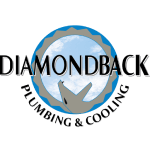Reverse osmosis (RO) systems ensure clean and safe home drinking water. Renowned for their effectiveness in removing contaminants such as lead, chlorine, and bacteria, these systems enhance filtered water quality. Many homeowners may ask, “How long do reverse osmosis systems last?”
Understanding the lifespan of RO systems is vital for planning maintenance and ensuring continuous access to pure water. With proper care and maintenance, these water systems can provide reliable filtration for many years, making them a valuable investment for any household.
Understanding Reverse Osmosis Systems
To answer this question, it’s essential to understand how reverse osmosis units work. RO systems utilize a semi-permeable membrane that filters out impurities, allowing only pure water to pass through. A typical system comprises several components, including a pre-filter, carbon filter, post-filter, storage tank, and faucet for easy access to purified water. Depending on various factors, water filter systems can last 5 to 15 years on average.
Lifespan of Reverse Osmosis Systems
A well-maintained water purification system typically lasts 10 to 15 years. However, several factors can influence its durability:
- Quality of the System: Investing in a high-quality water filter system from a reputable manufacturer can lead to a longer lifespan. These systems are usually constructed with superior materials and advanced technology that enhances their performance.
- Water Quality: The incoming quality of water supply significantly affects RO systems’ longevity. If your tap water is high in solids, sediment, or other impurities, you may need to replace RO filters more frequently, which can impact the unit’s overall lifespan. Additionally, if your water supply contains water softeners, this can also affect the filter’s lifespan.
- Low Water Pressure: Another factor to consider is the low water pressure in your home. If your RO system is not receiving adequate pressure, it may work harder, potentially shortening its lifespan.
Maintenance of RO Systems
Regular maintenance is crucial for extending the lifespan of your RO unit. Here are some essential maintenance tasks to keep in mind:
- Replacing Filters and Membranes: The pre-filter, carbon filter, sediment filter, and post-filter usually need replacement every 6 to 12 months, whereas the reverse osmosis membrane typically has a lifespan of 2 to 3 years. Keeping a maintenance schedule helps ensure optimal performance and reverse osmosis membrane longevity.
- Cleaning the System: Periodically sanitize the system to prevent buildup and clogs, which can enhance its durability. Regular maintenance helps prevent bad performance and ensures the filtration system operates effectively.
Adhering to these maintenance tips can significantly improve the lifespan of your reverse osmosis system. If you require assistance with maintenance or servicing, consider contacting a professional reverse osmosis system services provider for expert care and support.
Signs of a Failing Reverse Osmosis System
Recognizing the signs of a failing reverse osmosis system is essential to prevent further issues. Common indicators include:
- Decreased Water Flow Rate: A drop in water pressure or flow rate could indicate a clogged filter or a failing membrane.
- Unpleasant Taste or Odor: A change in taste or odor may suggest that the system is not effectively filtering contaminants.
- Frequent Need for Filter Changes: If you find yourself replacing filters more often than usual, it may be a sign of underlying system issues.
Common Misconceptions About Reverse Osmosis Systems
Despite their effectiveness, RO systems are often misunderstood. Clarifying these myths helps homeowners make informed decisions about water filtration.
- RO Systems Waste Too Much Water: Many believe RO units waste excessive water. While older models could waste 3 to 5 gallons for every gallon of purified water, modern systems are much more efficient, with some wasting only 1 gallon for each gallon produced.
- RO Removes Essential Minerals: Another myth is that RO units strip beneficial minerals from water. Although they remove some minerals, the levels in drinking water are generally insufficient to significantly impact health. Most minerals come from a balanced diet, not just water.
- RO Systems Are Energy-Intensive: Some think RO units consume a lot of energy. Most systems operate without electricity, relying on water pressure for filtration, resulting in minimal energy consumption compared to other appliances.
- Installation Is Complicated: Many avoid RO systems because they believe installation is difficult. However, many systems are designed for easy DIY installation, often accompanied by clear instructions and customer support.
- All RO Systems Are the Same: Consumers may assume all RO systems offer equal filtration. In reality, significant differences exist in quality and performance among brands. Choosing a reputable system ensures better efficiency and durability.
Replacement Schedule
To maximize the effectiveness of your RO system, follow a recommended replacement schedule:
- Membrane Replacement: Typically every 2 to 3 years.
- Filter Replacement: Generally every 6 to 12 months.
Adhering to this replacement schedule ensures your system operates at peak performance and prolongs its lifespan. If you’re unsure about the replacement process or need assistance, consider contacting a professional plumbing service for expert guidance and support.
Conclusion
Understanding the lifespan of reverse osmosis systems is crucial for ensuring a reliable supply of clean water for you and your family. At Diamondback Plumbing, we emphasize the importance of investing in high-quality systems and adhering to proper maintenance guidelines to extend their lifespan significantly. Clean water is vital for your health, and effective filtration is essential to achieving it.
Contact Diamondback Plumbing to provide expert advice and support in selecting and maintaining the proper RO Unit for your needs, ensuring that you enjoy the benefits of safe, purified drinking water for years to come.
